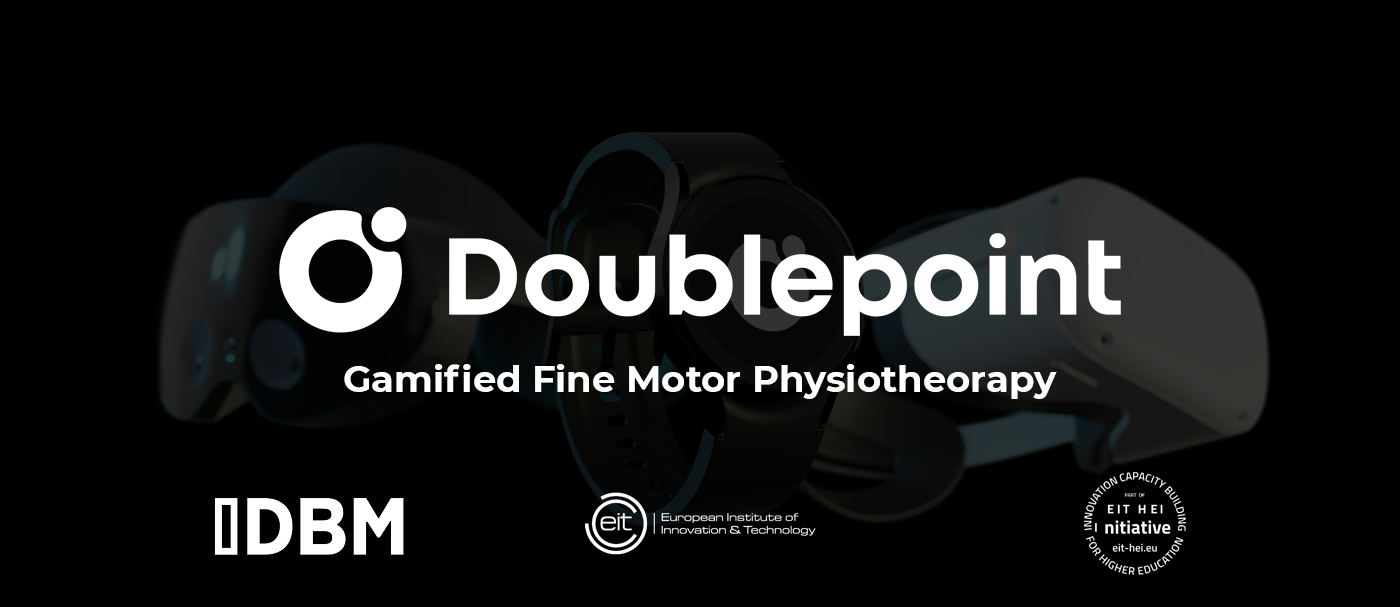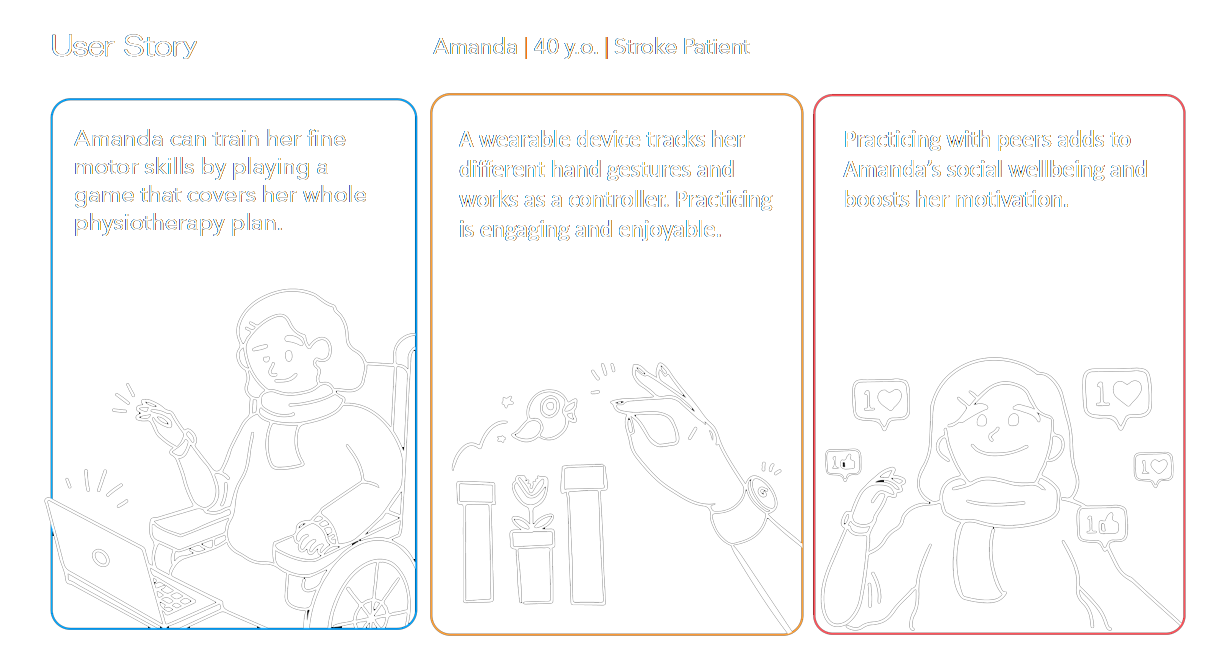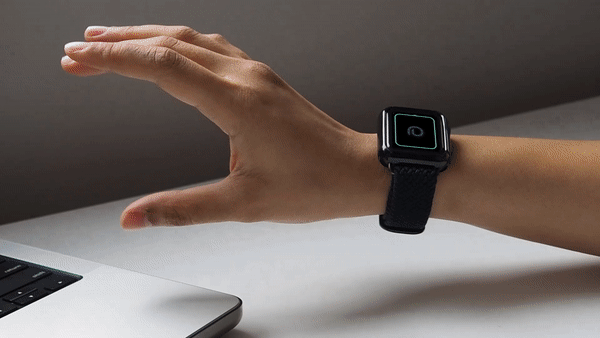Doublepoint
This project highlights our collaboration during the IDBM Industry Project course at Aalto University, where our interdisciplinary team worked with Doublepoint, a startup specializing in touch detection technology. Focused on entrepreneurship and startups, our project aimed to find innovative applications for Doublepoint's technology, particularly in enhancing independence for individuals with disabilities.
Here is only a summarized version of our full report which included our design process, the chosen solution, and its validation, emphasizing the potential impact on user experiences and business prospects. The goal is to showcase how Doublepoint's technology can contribute to inclusivity and independence for people with disabilities.

The 7-month design process involved an immersive exploration of the startup and XR industry landscape, followed by user needs discovery and research on inclusive technologies. The design challenge was redefined, leading to a solution through ideation and prototyping using the double diamond process framework.
Our team conducted industry immersion, with trips to California and Tokyo, engaging with professionals and attending XR-related events in Helsinki. Valuable insights were gained, leading to conclusions about the XR industry's relevance, dominance by big tech companies, and the importance of user-friendly integration. The team identified a niche market in accessibility, focusing on mobile people with assistants.
Thorough research included desktop and field research, involving interviews with seven user groups and associations. Thematic analysis revealed three main design directions: Independent home life, Safety, Education and rehabilitation, and Navigation. Navigation was eliminated due to technological constraints.
Finding the Solution
Independent Home Life
Smart home environments using Doublepoint's technology to control surroundings. Concerns about cost and financial accessibility deemed this solution unfeasible.
Safety
Emergency alerts solution faced challenges in the wider service system, rendering it unfeasible.
Learning and Rehabilitation
Utilizing Doublepoint’s touch technology in learning and rehabilitation for people with disabilities. Deemed the most desirable, feasible, and viable solution after careful evaluation.
Innovation
Fine motor skills, crucial for tasks requiring dexterity, hand-eye coordination, and finger manipulation, align with Doublepoint's touch detection technology. The design challenge emerged: "How might Doublepoint's touch detection technology make people with fine motor disabilities more independent?" We shifted the focus to individuals with fine motoric skills, including those post-stroke, with brain injuries, CP, neuromuscular disorders, or developmental coordination disorders.

Solution
Solution for the User (End-Product)
We identified the need for gamified physiotherapy, making exercises interactive and enjoyable. Collaborating with Rehaboo, a gamified exercise game platform, was explored. Our innovation process included brainstorming, defining core value propositions, creating a business model, and prototyping. The tap-based game prototype showcased Doublepoint's technology at events like Impact Gala and Service Design Day at Miltton, receiving positive feedback with considerations for graphic improvements. The emphasis was on creating a product catering to various user demographics.
The key idea behind the product concept is to gamify fine motor physiotherapy with the help of touch detection technology. This way, people with fine motor disabilities can carry out their physiotherapy exercises by playing a game. The game is controlled with specified hand gestures, such as pinches or clenches, which are tracked by a wearable smart device on the user’s wrist. The touch detection sensor is highly sensitive, and the algorithm is trainable and customizable, making the product suitable for those with limited muscle power or imprecise motions.

The touch detection technology can be connected to various games through the SDK, enhancing inclusivity and attractiveness to a wider user group. The game can be played in healthcare settings or at home using any smartwatch with the touch SDK installed, connected to a computer or mobile device. The SDK and the game can be installed on the user’s own devices or provided by healthcare services.
In the best-case scenario, the entire physiotherapy plan could be built on the game platform, making exercising an engaging journey. This may enhance the user’s motivation while making progress more trackable and tangible. Social elements in the game could allow users to practice with others, providing peer support and reducing the feeling of isolation, common among those with motor disabilities.
Several key design principles for the end-product include the ability to control the game with specified hand gestures, regardless of the user's fine motor capabilities, individualized game journeys covering their physiotherapy plan, progress tracking, motivational notifications, and lightweight, customizable, and sensitive devices.

Solution for Doublepoint (Business Model)
On the other side of the coin, there is the solution that implements this user end-product, while addressing Doublepoint’s needs in terms of business development (i.e., business model). This side of the coin strives to answer the initial brief – to present a novel use case for Doublepoint’s touch detection technology, and to argue for its desirability, feasibility, and desirability.
The business model revolves around providing client companies with the touch SDK for their physiotherapy game development. The SDK allows for the integration of touch detection technology into various physiotherapy games, offering a novel and inclusive way for individuals with fine motor disabilities to engage in their rehabilitation.
Doublepoint’s touch detection technology is highly adaptable, making it suitable for integration with existing games through partnerships with game developers. This extends the variety of games available, addressing the need for diverse options highlighted in feedback. Particularly, the mobile gaming industry can benefit from incorporating accessibility features through Doublepoint’s existing SDK, given its integration with the Unity game engine.
The business model aims to make the touch SDK accessible to healthcare services, allowing them to provide devices and games to users. This creates opportunities for partnerships and collaborations with healthcare providers, further expanding the reach and impact of Doublepoint’s technology.

Validation
The success of the solution hinges on its desirability, technical feasibility, and financial viability. While this report serves as an initial screening, deeper considerations are essential if the concept moves to implementation.
Desirability
The end-users, physiotherapists, and game developers stand to benefit from the value proposition. The game, emphasizing engagement, motivation, and fun, promises to improve physiotherapy outcomes and reduce healthcare costs, making it a desirable solution for various stakeholders.
Feasibility
Integrating touch-interaction and gesture-based features presents challenges, but the Accessibility SDK's flexibility, technological expertise, and potential collaborations offer solutions. Limitations, including emotional engagement and hardware constraints, are acknowledged and can be addressed through continuous improvement and partnerships.
Viability
Business viability involves assessing market demand, research and development growth, user feedback, and potential partnerships. Doublepoint's capabilities, including Touch SDK experience, machine-learning algorithms, and strategic collaborations, position the solution for success. However, deeper analysis and customer interviews are essential to refine the business model and explore alternative partnerships.
